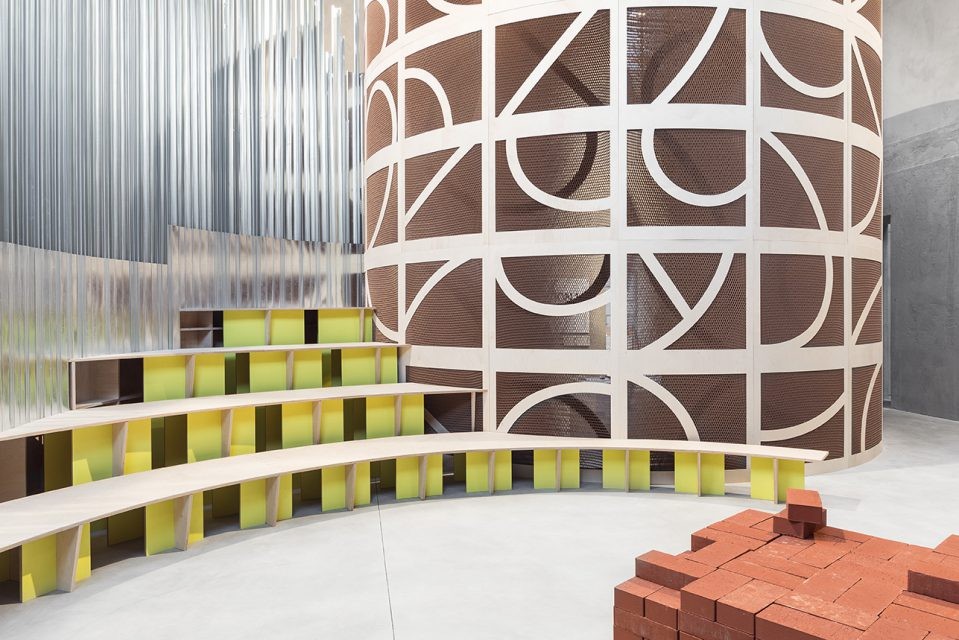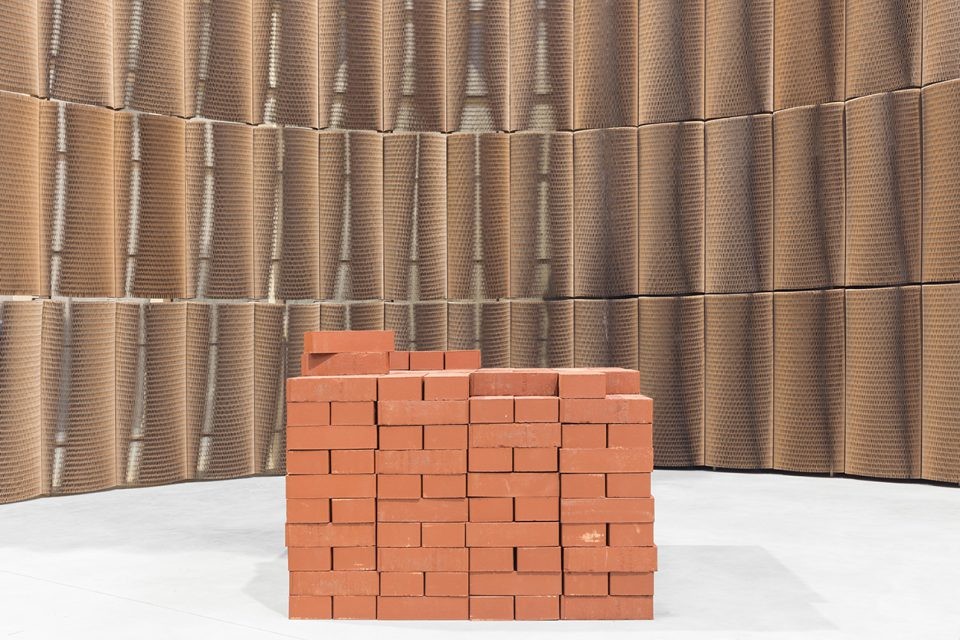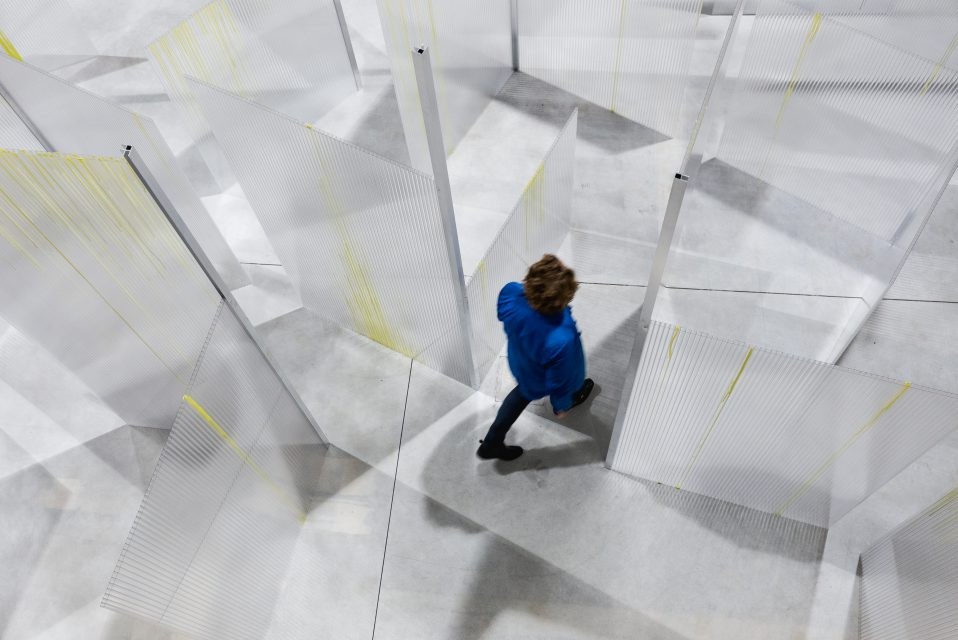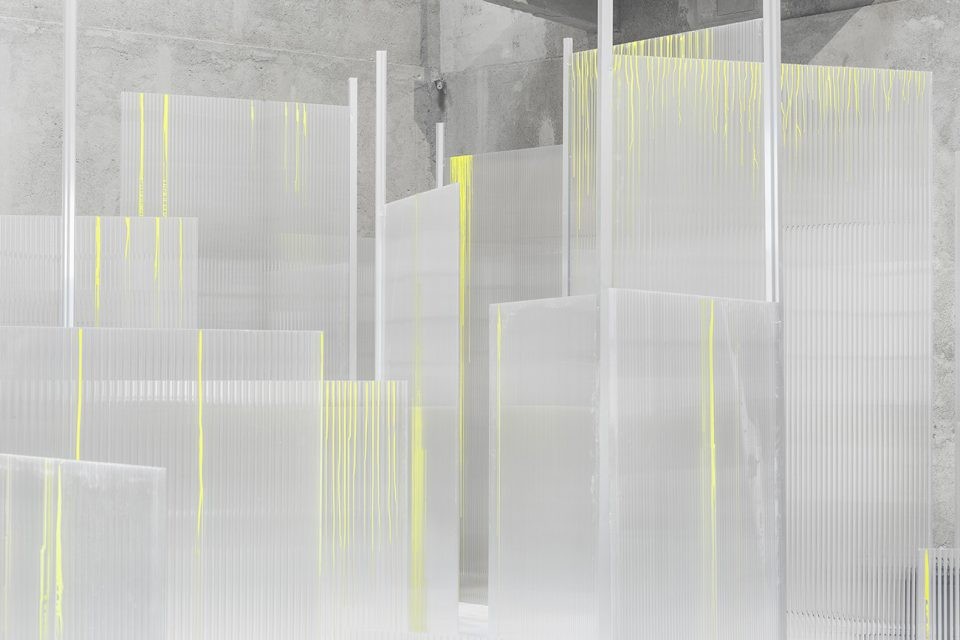Tobias Putrih
Slight Agitation 1/4
20 Oct 2016 - 22 Jan 2017

“SLIGHT AGITATION 1/4: Tobias Putrih”. Installation view. Photo Delfino Sisto Legnani e Marco Cappelletti. Courtesy Fondazione Prada

“SLIGHT AGITATION 1/4: Tobias Putrih”. Installation view. Photo Delfino Sisto Legnani e Marco Cappelletti. Courtesy Fondazione Prada

“SLIGHT AGITATION 1/4: Tobias Putrih”. Installation view. Photo Delfino Sisto Legnani e Marco Cappelletti. Courtesy Fondazione Prada

“SLIGHT AGITATION 1/4: Tobias Putrih”. Installation view. Photo Delfino Sisto Legnani e Marco Cappelletti. Courtesy Fondazione Prada
TOBIAS PUTRIH
Slight Agitation 1/4
20 October 2016 – 22 January 2017
“Slight Agitation” is a four-part project of newly commissioned, site-specific works presented in sequence within the Cisterna, one of the pre-existing buildings at Fondazione Prada’s Milan venue.
Curated by the Fondazione Prada Thought Council, whose current members are Shumon Basar, Cédric Libert, Elvira Dyangani Ose, and Dieter Roelstraete, “Slight Agitation” will unfold in four chapters realized by the international artists Tobias Putrih (Slovenia, 1972), Pamela Rosenkranz (Switzerland, 1979), Laura Lima (Brazil, 1971) and Gelitin, the Austrian collective active since 1993.
The title of the project was inspired by the poetic expression “une légère agitation”, employed by the French historian Fernand Braudel to describe the tidal movement of the Mediterranean. This metaphor embodies the Thought Council’s starting point to present interventions by artists whose practices differ considerably in philosophical and material terms, all of them commissioned to interfere and dialogue with the spatial context of the Cisterna and to influence the viewer’s physical experience and all her or his attendant senses through their works.
Renowned for his architectural and sculptural installations, which resemble models, prototypes and the temporary configurations of an often critical or utopic conceptual process, Tobias Putrih realized the first intervention included in the “Slight Agitation” series, on view until 22 January 2017. Through his work, the environments within the Cisterna will take on three different configurations, which all engage with ideas of play, politics and emancipation: a theater for an ongoing brick construction, a tactile ‘blind room’ and a sculpture that turns into a labyrinth.
As a whole, Putrih’s intervention embodies an inhabited game. In its individual configurations, it evokes the innocence of childhood and the surprise caused by initial discoveries made through play, subsequently building a real scale autonomous world, linked to the imaginative aspect of children’s playful adventures. Through this project, the artist explicitly echoes many historical precedents between art, architectures and experimental pedagogy: from Friedrich Fröbel’s Kindergarten to Frank Lloyd Wright’s wooden blocks; from Vorkurs, the preparatory course for Bauhaus students conceived by Johannes Itten, to Dada and Surrealist games; from 1960s countercultures to Buckminster Fuller’s World Game.
With this new work, the artist explores the limits and possibilities of learning through play, extending the physical experience of a large-scale game into the political realm of negotiation and the awareness of collective behaviors. Instead of one-player game with predefined rules, Putrih proposes an evolutionary self-reflective set of play that engages with the audience, the curators and the artist himself, implying a collaborative interaction between all subjects involved.
Slight Agitation 1/4
20 October 2016 – 22 January 2017
“Slight Agitation” is a four-part project of newly commissioned, site-specific works presented in sequence within the Cisterna, one of the pre-existing buildings at Fondazione Prada’s Milan venue.
Curated by the Fondazione Prada Thought Council, whose current members are Shumon Basar, Cédric Libert, Elvira Dyangani Ose, and Dieter Roelstraete, “Slight Agitation” will unfold in four chapters realized by the international artists Tobias Putrih (Slovenia, 1972), Pamela Rosenkranz (Switzerland, 1979), Laura Lima (Brazil, 1971) and Gelitin, the Austrian collective active since 1993.
The title of the project was inspired by the poetic expression “une légère agitation”, employed by the French historian Fernand Braudel to describe the tidal movement of the Mediterranean. This metaphor embodies the Thought Council’s starting point to present interventions by artists whose practices differ considerably in philosophical and material terms, all of them commissioned to interfere and dialogue with the spatial context of the Cisterna and to influence the viewer’s physical experience and all her or his attendant senses through their works.
Renowned for his architectural and sculptural installations, which resemble models, prototypes and the temporary configurations of an often critical or utopic conceptual process, Tobias Putrih realized the first intervention included in the “Slight Agitation” series, on view until 22 January 2017. Through his work, the environments within the Cisterna will take on three different configurations, which all engage with ideas of play, politics and emancipation: a theater for an ongoing brick construction, a tactile ‘blind room’ and a sculpture that turns into a labyrinth.
As a whole, Putrih’s intervention embodies an inhabited game. In its individual configurations, it evokes the innocence of childhood and the surprise caused by initial discoveries made through play, subsequently building a real scale autonomous world, linked to the imaginative aspect of children’s playful adventures. Through this project, the artist explicitly echoes many historical precedents between art, architectures and experimental pedagogy: from Friedrich Fröbel’s Kindergarten to Frank Lloyd Wright’s wooden blocks; from Vorkurs, the preparatory course for Bauhaus students conceived by Johannes Itten, to Dada and Surrealist games; from 1960s countercultures to Buckminster Fuller’s World Game.
With this new work, the artist explores the limits and possibilities of learning through play, extending the physical experience of a large-scale game into the political realm of negotiation and the awareness of collective behaviors. Instead of one-player game with predefined rules, Putrih proposes an evolutionary self-reflective set of play that engages with the audience, the curators and the artist himself, implying a collaborative interaction between all subjects involved.
